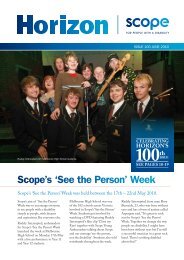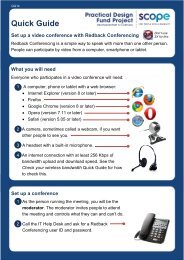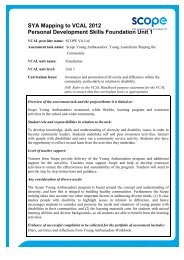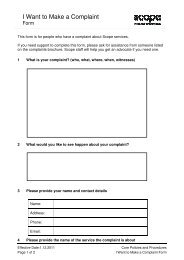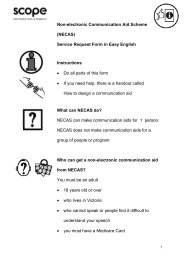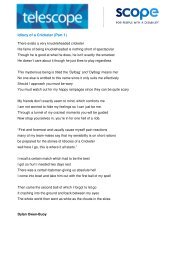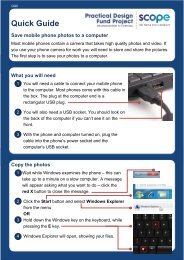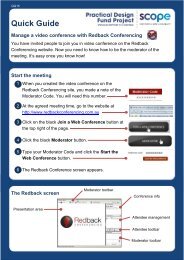Positive behaviour support Getting it right from the start
Positive behaviour support Getting it right from the start
Positive behaviour support Getting it right from the start
Create successful ePaper yourself
Turn your PDF publications into a flip-book with our unique Google optimized e-Paper software.
<strong>Pos<strong>it</strong>ive</strong> <strong>behaviour</strong> <strong>support</strong>: <strong>Getting</strong> <strong>it</strong> <strong>right</strong> <strong>from</strong> <strong>the</strong> <strong>start</strong> - Facil<strong>it</strong>ators reference manual 59<br />
Completing a functional <strong>behaviour</strong> assessment<br />
PowerPoint 81 Step 1. Clearly defining <strong>the</strong> <strong>behaviour</strong> of concern<br />
*<br />
This is often referred to as an ‘operational defin<strong>it</strong>ion’ of <strong>the</strong> <strong>behaviour</strong>. Having a clear and<br />
concise defin<strong>it</strong>ion of <strong>the</strong> <strong>behaviour</strong> is essential when conducting a functional assessment. As a<br />
functional assessment may consider observations/records/ideas <strong>from</strong> more than one person, <strong>it</strong><br />
is important that everyone has exactly <strong>the</strong> same <strong>behaviour</strong> in mind. A good operational defin<strong>it</strong>ion<br />
may also serve as a helpful reference for o<strong>the</strong>rs involved in providing <strong>support</strong> to <strong>the</strong> person.<br />
Behaviours should not be wr<strong>it</strong>ten in a way that is vague or subjective or broad. The defin<strong>it</strong>ion<br />
needs to be specific. A good operational defin<strong>it</strong>ion of <strong>the</strong> <strong>behaviour</strong> is one that is wr<strong>it</strong>ten in a<br />
way that:<br />
1. can be visualised<br />
2. frequency can be counted<br />
3. is agreed on by different observers regarding <strong>it</strong>s occurrence and absence.<br />
PowerPoint 82<br />
PowerPoint 83<br />
*<br />
*<br />
Three examples of client <strong>behaviour</strong>s are wr<strong>it</strong>ten below.<br />
Identify which one is wr<strong>it</strong>ten objectively and rewr<strong>it</strong>e <strong>the</strong> o<strong>the</strong>rs according to <strong>the</strong> above<br />
guidelines.<br />
1. Mario has a long history of aggression. When Mario gets upset he will often kick staff and<br />
co-residents and at times will throw <strong>it</strong>ems such as chairs and cups at o<strong>the</strong>rs.<br />
2. Sally will h<strong>it</strong> her head against walls in her bedroom on a daily basis and this becomes more<br />
frequent at <strong>the</strong> end of each month.<br />
3. Terry often presents w<strong>it</strong>h w<strong>it</strong>hdrawn <strong>behaviour</strong> and on occasion he does not comply w<strong>it</strong>h<br />
staffs requests. Sometimes Terry will also pick at his bottom and rub his gen<strong>it</strong>als when staff<br />
members tell him what to do.<br />
Watch snippets <strong>from</strong> <strong>the</strong> Australian movie The Black Balloon. After viewing one or two<br />
snippets describe <strong>the</strong> <strong>behaviour</strong>s observed.<br />
Review all <strong>the</strong> information you have collected on your focus person.<br />
As a group describe three <strong>behaviour</strong>s that are of concern.<br />
These <strong>behaviour</strong>s will become <strong>the</strong> focus of <strong>the</strong> next few activ<strong>it</strong>ies.



